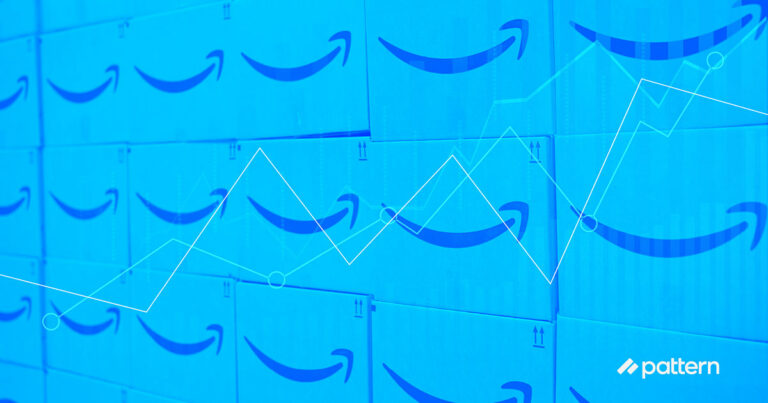It’s easy to throw your product online, forget about it, and go about your business expecting to make big profits on ecommerce in your sleep. Even though the internet has made some incredible things possible—like ordering 1,500 live ladybugs to your doorstep—what it can’t do is tackle your brand management for you; and without brand management, you could be inadvertently causing real financial harm to your company.
What is brand management?
At a high level, brand management (or marketplace management) is a component of marketing that ensures your business is running smoothly and has consistent messaging across all domestic and international channels—this includes your marketing, your advertising, logistics, listings, social media, and more. In ecommerce, brand management includes controlling how other sellers use your brand name and products in the marketplace.
Why does brand management matter?
Brand management (or the lack thereof) directly impacts how customers view your brand and your product, which affects the value of your brand and product, and the price a shopper is willing to pay for your brand’s products. With good management, you can increase the perceived value of your product line and improve your brand equity over time. You can also grow brand awareness and build a tight ship that consumers love and trust.
Brand management protects your brand image
Without brand management, you’re essentially giving unauthorized sellers or even poor authorized sellers permission to say and do whatever they want to your brand image.
Let’s say you’ve got an awesome product in the market and you’ve got a wide variety of partners selling it. You might think your job is done and that these partners can just distribute your product and make money for you without you doing a thing.
Not so fast.
There’s an old adage that when the cat is away, the mice come out to play—and it applies to brand management. Without brand management, sellers are more likely to throw your product listings on Amazon with reckless abandon and without the care your product deserves. They might have an image stack with low quality photos or not enough photos, for example. They might not provide enough details on the listing for a customer to feel confident making a purchase. They might use messaging that’s inconsistent with your own messaging so that buyers don’t trust that they’re getting a genuine product.
Now I’m sure you’re thinking “Not so fast! I picked a good distributor, they would never do this.”
But we would argue (because we’ve seen) that even the best appearing distributors can get a little shady when they need to make a profit. If one distributor goes rogue and lowers the price, the rest of your distributors may lower their prices to compete, which means your price is now lower overall. Or if one distributor decides your product isn’t selling well enough, they may take a few liberties in the title or product description, just to help push your product a little harder.
Unfortunately, all of these things don’t just reflect badly on the seller, they reflect badly on your brand. Because even though the product comes from a third-party seller, the first thing a customer will see on the listing is that it’s your product and your brand. In fact, the unique seller is rarely noticed by marketplace shoppers. It’s a sobering and important note that all of the hard work you put into creating a good reputation can become worthless if you aren’t controlling it across all sellers and all marketplaces.
Brand management protects your profits
Poor brand management, in addition to harming your reputation, can have significant and immediate negative financial impacts. One of the most common ways this can happen is through price erosion.
Price erosion happens when an unauthorized third-party seller gets a hold of your product and undercuts your pricing. This tactic is useful for the authorized seller as they will drive your shoppers to their discounted product, leaving your fully priced product on the shelf. But it leaves your other distributors out to dry as consumers will choose the lower price over the authorized retailer. This strain causes every other seller to lower their own product pricing in order to stay competitive. But this eats into your margins and your sellers’ margins, and these price drops will keep happening over and over again until your sellers run out of inventory.
Not only does this diminish the perceived value and quality of your product to customers, but it harms your relationships with your sellers. If they know that you’re not managing your brand online to prevent situations like this and protect them as sellers, they will have few incentives to continue selling your products in the future.
And you can’t blame them. If sellers can’t make a profit on your products, why should they continue to sell them?
How does brand management work?
Okay, okay, so brand management is important for the reputation and financial health of your brand, but what does it look like and how does it work?
Brand management comes down to having a solid brand strategy, quality partnerships, consistent messaging, and effective brand protection that stops rogue sellers in their tracks.
One way you can manage and protect your brand online is by creating and enforcing a MAP pricing policy to standardize the recommended pricing of your products on Amazon. Effective MAP policies let your sellers know that you’re serious about keeping pricing stable and willing to enforce consequences when sellers underprice. It can weed out the bad players harming your brand and support the partners that want to do business with you the right way.
Another way you can manage your brand better online is to limit your distribution to one or two quality distributors so leaks are less likely to happen. When you focus on a few quality sellers you can trust that your messaging will be consistent across all channels. You want imagery to be high quality and your brand voice to be recognizable, engaging, and true to brand, whether a customer is finding your product on social media, your website, or another seller on Amazon.
Rather than doing all of this work on your own, though, you might consider hiring an outside brand manager to partner with you, tackle the workload, and bring your ecommerce gaols to life.
Your brand manager should have a good sense of what your brand is and what goals you have for the future. A good brand manager will work in partnership with you to enforce your policies and messaging. Ultimately, when looking for a brand manager, you want to find someone you can have a good relationship with who cares just as much for your brand as you do.
The Benefits of brand management with Pattern
Here at Pattern, we offer high quality and strategic brand management for our partners as well as every tool they need to take back control of their ecommerce business from the ground up.
With access to our internal data and tech software, our brand managers work in concert with your ecommerce team and to pinpoint your pain points on ecommerce, enforce your MAP policy, clean up your listing copy and imagery, and provide you with an SEO marketing plan that helps you to capitalize on the right keywords and reach your target audience.
When you partner with Pattern, you receive your own brand manager who helps manage your Pattern team, answers any questions you have, and helps you drive a strategy for success. We’ll make sure your branding and content is consistent across all of your channels and provide stellar customer service to keep your customers coming back.
Ready to learn more about the financial savings and brand protection of a partnership with Pattern? Get in touch today.



